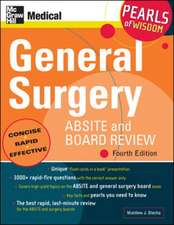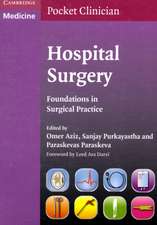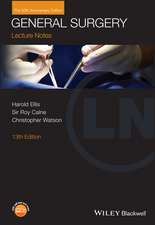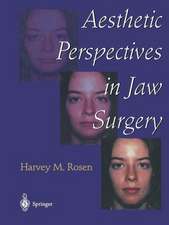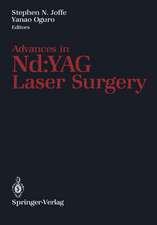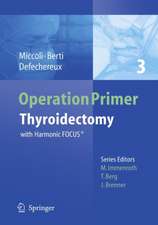Amputation, Prosthesis Use, and Phantom Limb Pain: An Interdisciplinary Perspective
Editat de Craig Murrayen Limba Engleză Hardback – 14 dec 2009
Preț: 592.11 lei
Preț vechi: 623.27 lei
-5% Nou
Puncte Express: 888
Preț estimativ în valută:
113.31€ • 123.04$ • 95.18£
113.31€ • 123.04$ • 95.18£
Carte tipărită la comandă
Livrare economică 22 aprilie-06 mai
Preluare comenzi: 021 569.72.76
Specificații
ISBN-13: 9780387874616
ISBN-10: 0387874615
Pagini: 203
Ilustrații: IX, 203 p.
Dimensiuni: 155 x 235 x 14 mm
Greutate: 0.48 kg
Ediția:2010
Editura: Springer
Colecția Springer
Locul publicării:New York, NY, United States
ISBN-10: 0387874615
Pagini: 203
Ilustrații: IX, 203 p.
Dimensiuni: 155 x 235 x 14 mm
Greutate: 0.48 kg
Ediția:2010
Editura: Springer
Colecția Springer
Locul publicării:New York, NY, United States
Public țintă
Professional/practitionerCuprins
Developing an Interdisciplinary Perspective on Amputation, Prosthesis Use, and Phantom Limb Pain: An Introduction.- Need-Directed Design of Prostheses and Enabling Resources.- Ethical and Medico-Legal Issues in Amputee Prosthetic Rehabilitation.- Monitoring of Upper Limb Prosthesis Activity in Trans-Radial Amputees.- Adaptation to Amputation and Prosthesis Use.- Understanding Adjustment and Coping to Limb Loss and Absence through Phenomenologies of Prosthesis Use.- Return to Work After Amputation.- Gender, Sexuality and Prosthesis Use: Implications for Rehabilitation.- Post Amputation Chronic Pain Profile and Management.- Phantom Limb Pain; Prevalence, Mechanisms and Associated Factors.- Management of Phantom Limb Pain.- Virtual Solutions to Phantom Problems: Using Immersive Virtual Reality to Treat Phantom Limb Pain.
Recenzii
From the reviews:
“The book consists of 12 chapters divided into 3 main sections that outline the multidisciplinary developments in the understanding and treatment of phantom limb pain. Each chapter is well written and provides references to key sources in the field. … This book is written for a variety of professionals and draws attention to the increased need for additional research in the area of phantom limb pain. The book has accomplished its goal of updating current understanding and identifying optimal, multidisciplinary treatments of phantom limb pain.” (Brian M. Kelly, Journal of the American Medical Association, December, 2010)
“The book consists of 12 chapters divided into 3 main sections that outline the multidisciplinary developments in the understanding and treatment of phantom limb pain. Each chapter is well written and provides references to key sources in the field. … This book is written for a variety of professionals and draws attention to the increased need for additional research in the area of phantom limb pain. The book has accomplished its goal of updating current understanding and identifying optimal, multidisciplinary treatments of phantom limb pain.” (Brian M. Kelly, Journal of the American Medical Association, December, 2010)
Notă biografică
Craig Murray is a Senior Lecturer at Lancaster University with research specialization in health, clinical psychology, and embodiment. He has more than 100 journal, book, and conference publications. These include papers in key Health Psychology (British Journal of Health Psychology; Health Informatics; Health Psychology; Health, Risk and Society; Qualitative Health Research, Psychology, Health and Medicine; Social Science and Medicine) Mental Health (Journal of Nervous and Mental Disease; Journal of Mental Health) and Rehabilitation (CyberPsychology and Behavior; Disability and Rehabilitation; International Journal on Disability and Human Development) journal titles. He has published widely on the topic of amputation, prosthesis use and phantom limb pain and led funded research programmes on these topics. This work has received international media attention (including television: Canadian Discovery Channel, Australian Broadcasting Corporation radio and television, and America’s CNN; and press: e.g. The Times, Australia’s Sydney Morning Herald, China’s People Daily, Russian Newsweek, New Yorker magazine). He is editor of ‘Psychological Scientific Perspectives on out-of-body experiences’ (2009, Nova Science Publishers, New York).
Textul de pe ultima copertă
Amputation, Prosthesis Use, and Phantom Limb Pain
An Interdisciplinary Perspective
Edited by Craig D. Murray
For the millions of patients adjusting to life with one or more missing limbs, adaptation involves an intricate network of physical, psychological, social, and existential factors.
It is with this complex scenario in mind that Amputation, Prosthesis Use, and Phantom Limb Pain: An Interdisciplinary Perspective has been developed. Unlike other books that deal exclusively with one or another of these topics, this volume unites the three to return the experiential to what is often treated in the literature—and too often in the clinic—as a solely medical condition. Written by top specialists in areas ranging from psychology and neuroscience to biomedical engineering and computer science (and including material applicable to those with congenital missing limbs as well as to amputees), this volume provides up-to-date knowledge with wide appeal to a variety of professional readers. In addition, the book’s accessibility ensures that practitioners working in teams understand each other’s work as well as client needs. Among the leading-edge topics:
An Interdisciplinary Perspective
Edited by Craig D. Murray
For the millions of patients adjusting to life with one or more missing limbs, adaptation involves an intricate network of physical, psychological, social, and existential factors.
It is with this complex scenario in mind that Amputation, Prosthesis Use, and Phantom Limb Pain: An Interdisciplinary Perspective has been developed. Unlike other books that deal exclusively with one or another of these topics, this volume unites the three to return the experiential to what is often treated in the literature—and too often in the clinic—as a solely medical condition. Written by top specialists in areas ranging from psychology and neuroscience to biomedical engineering and computer science (and including material applicable to those with congenital missing limbs as well as to amputees), this volume provides up-to-date knowledge with wide appeal to a variety of professional readers. In addition, the book’s accessibility ensures that practitioners working in teams understand each other’s work as well as client needs. Among the leading-edge topics:
- Ethical and medico-legal issues in providing assistive technology.
- Psychosocial assessment of adaptation to amputation and prosthesis use.
- Congenital limb deficiencies and experiences of prosthesis use.
- Prothesis use relating to the formation and maintenance of romantic relationships.
- Biopsychosocial approaches to postoperative pain.
- Phenomenology of phantom limb experience and prosthesis use.
- Relationship between coping style and phantom limb pain.
- Virtual-reality treatments for phantom limb pain.
Caracteristici
One of the view available books that cover amputation, prosthesis use, and phantom limb pain together, as the intricately related topics that they are Offers a broad appeal to a varied readership through innovative exploration of the entire process surrounding limb loss and eventual recovery

